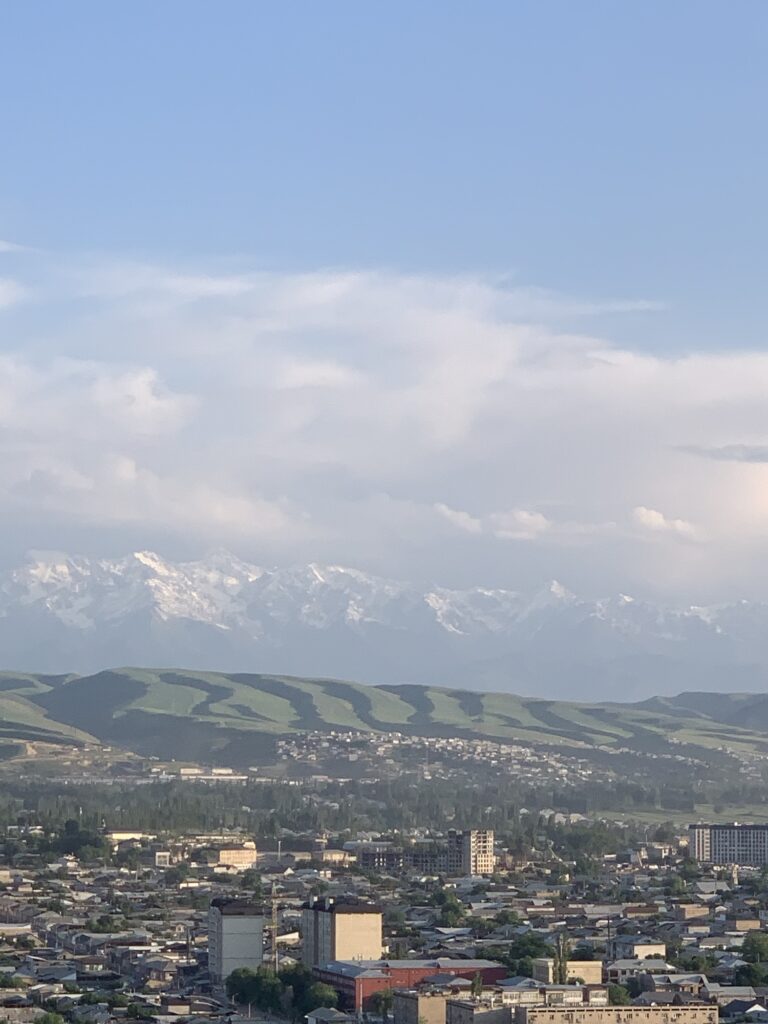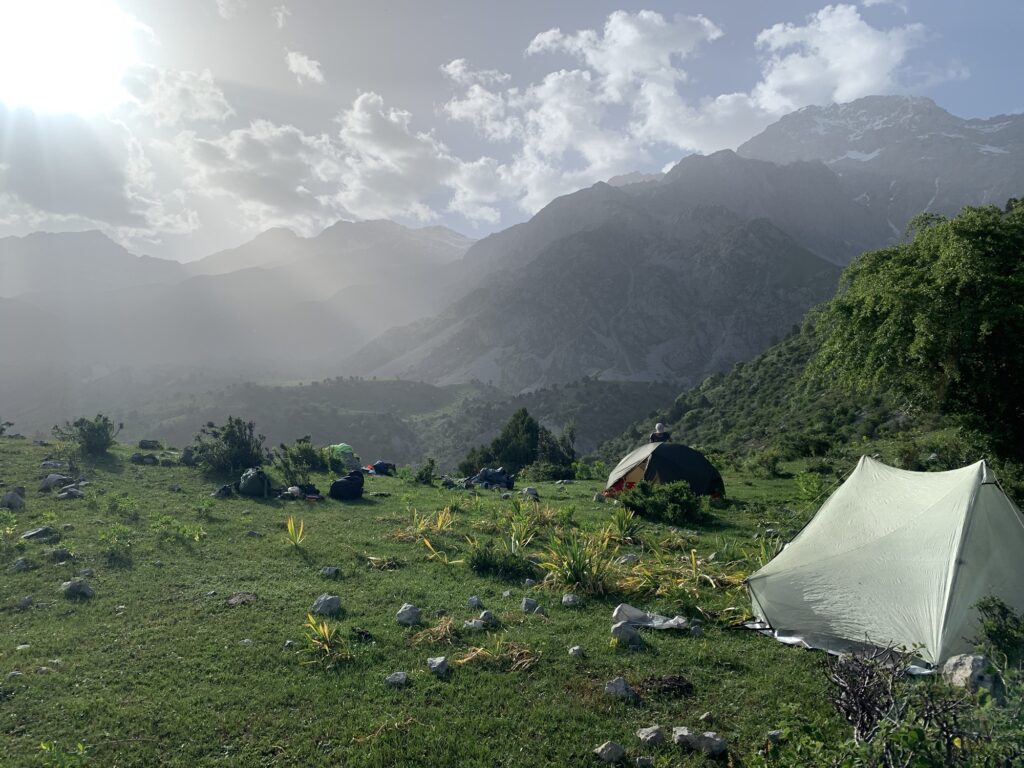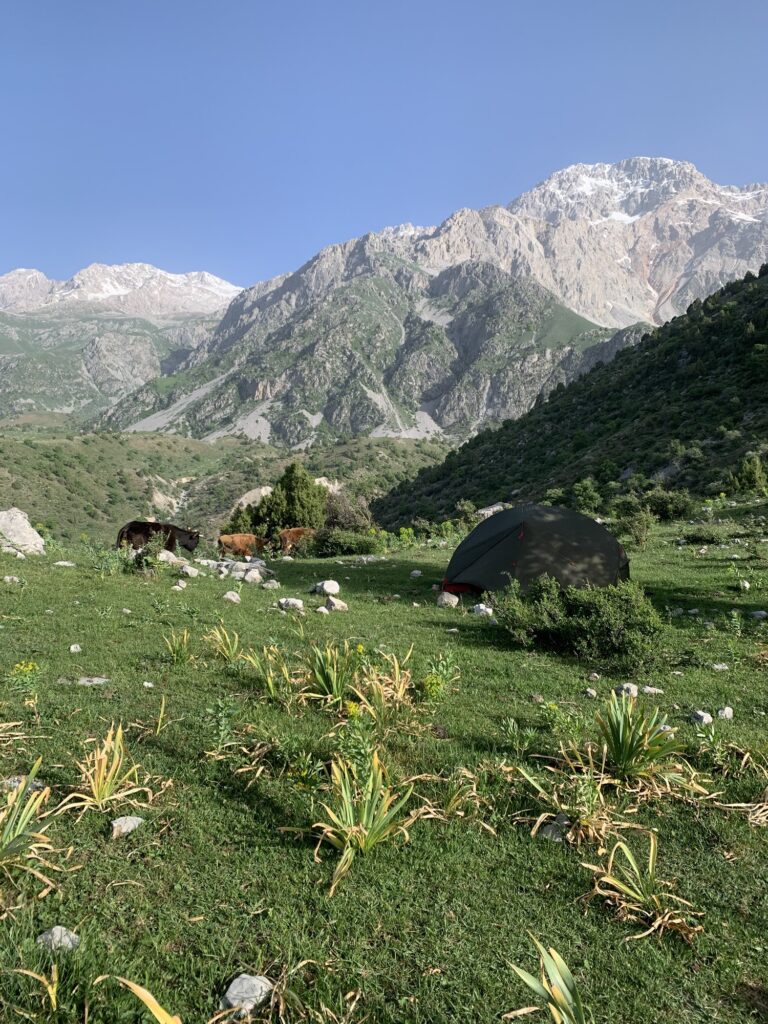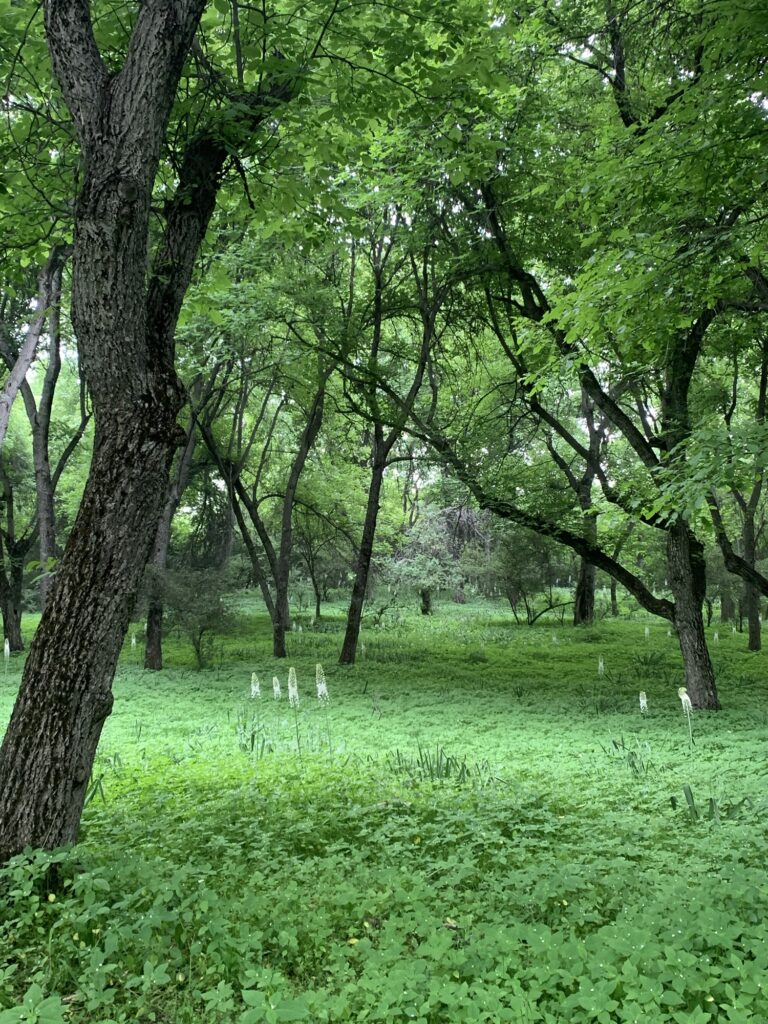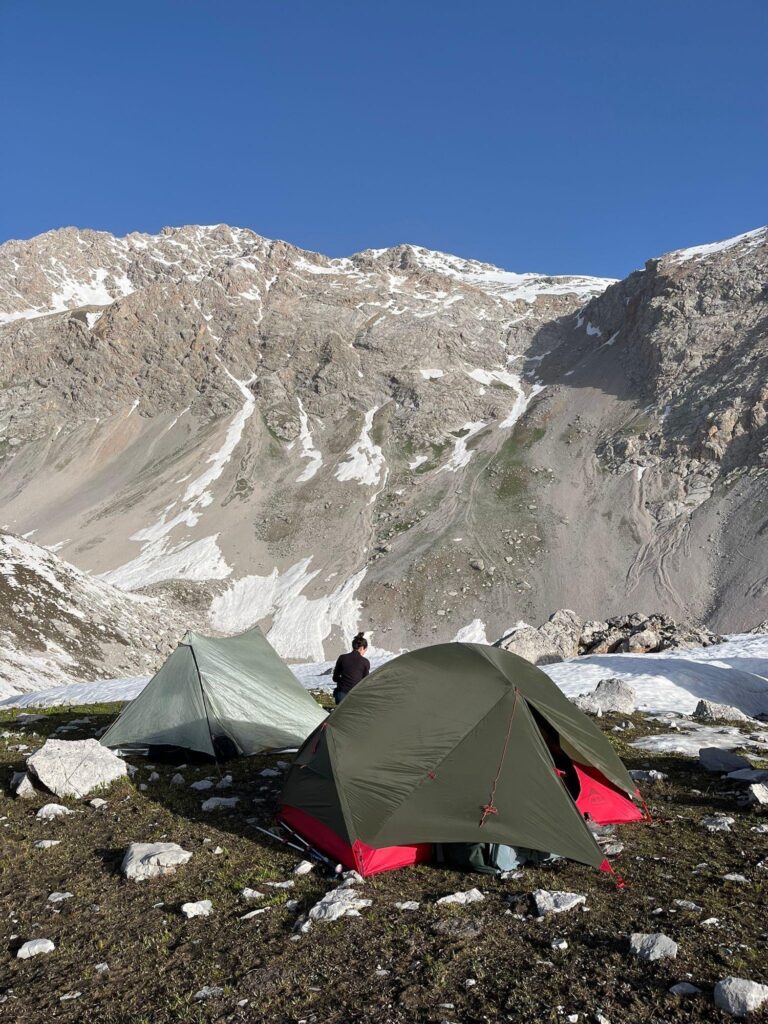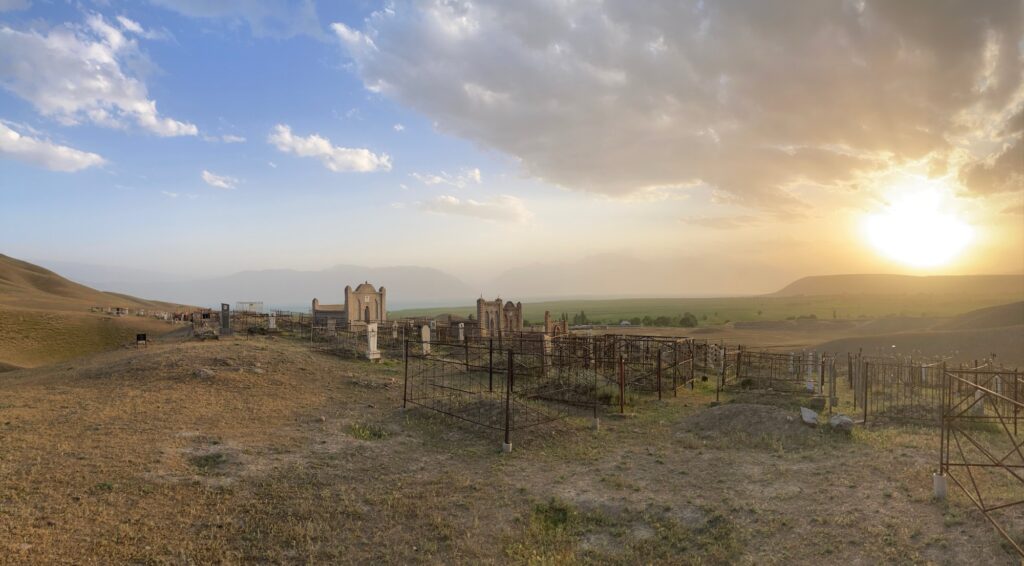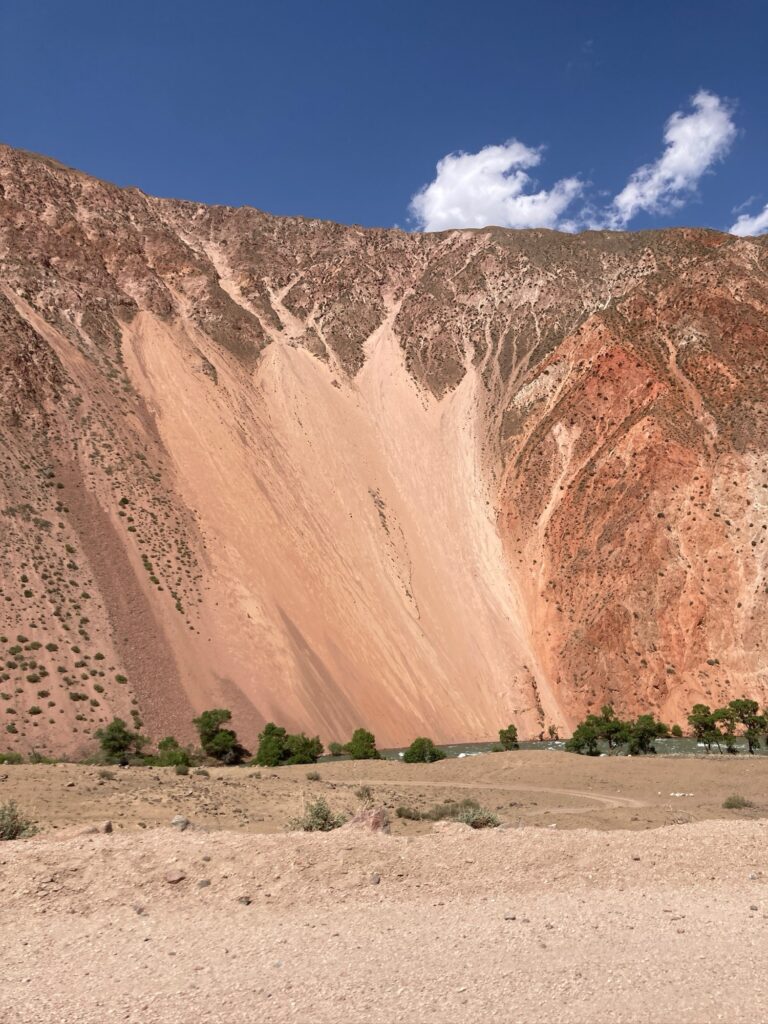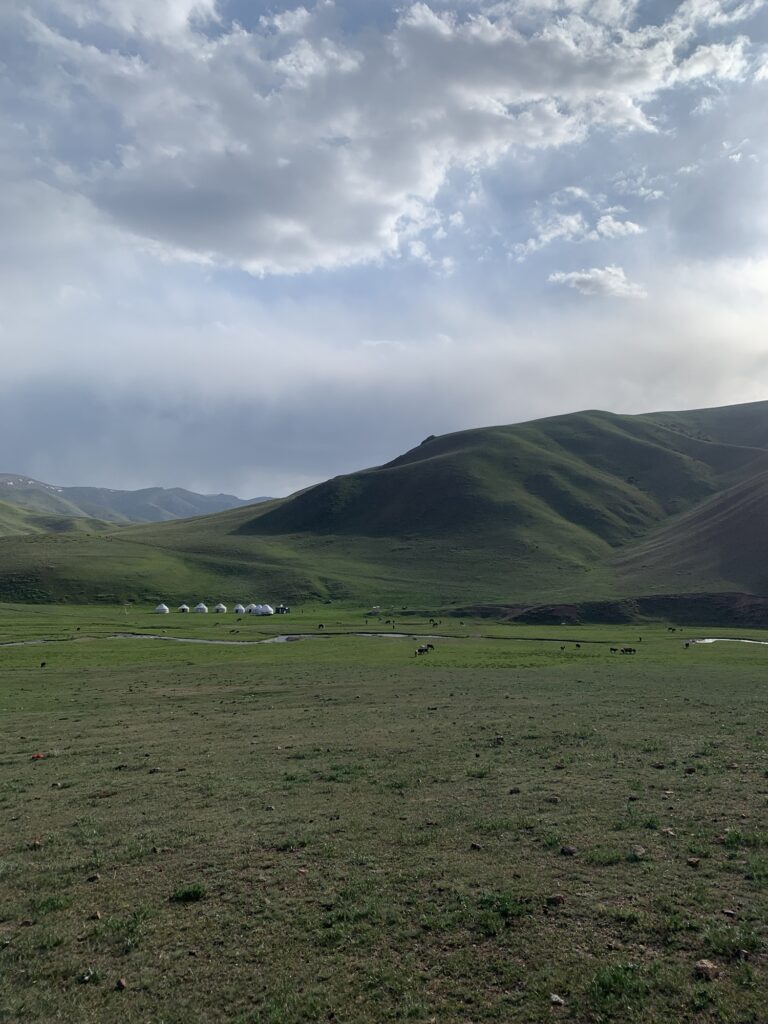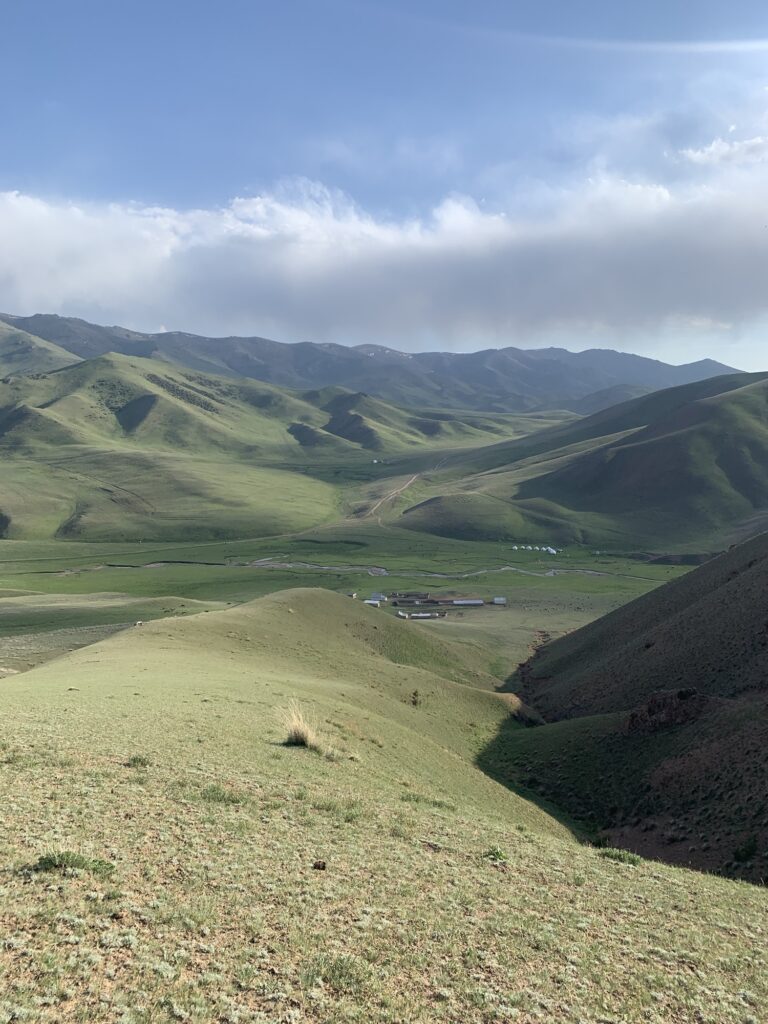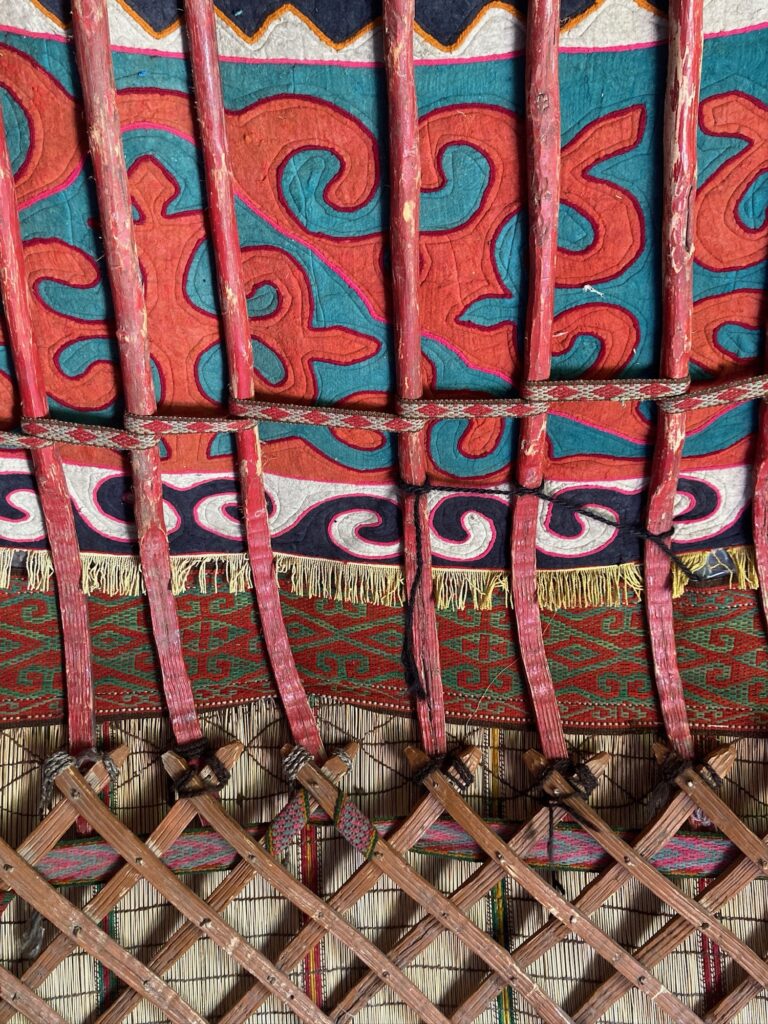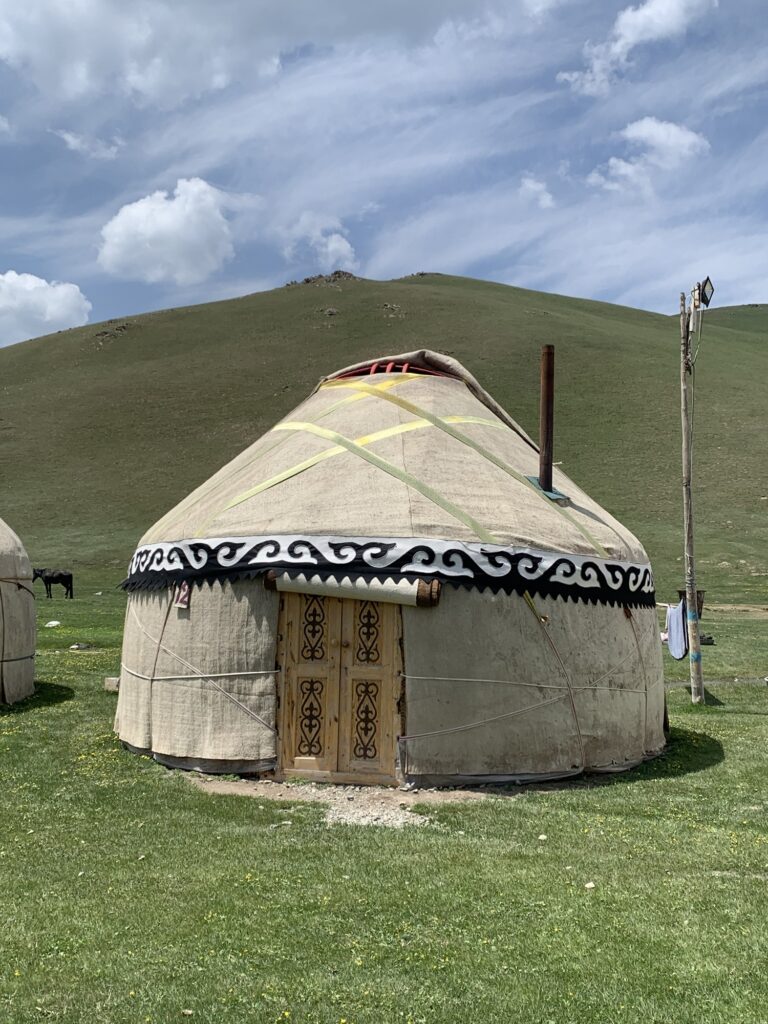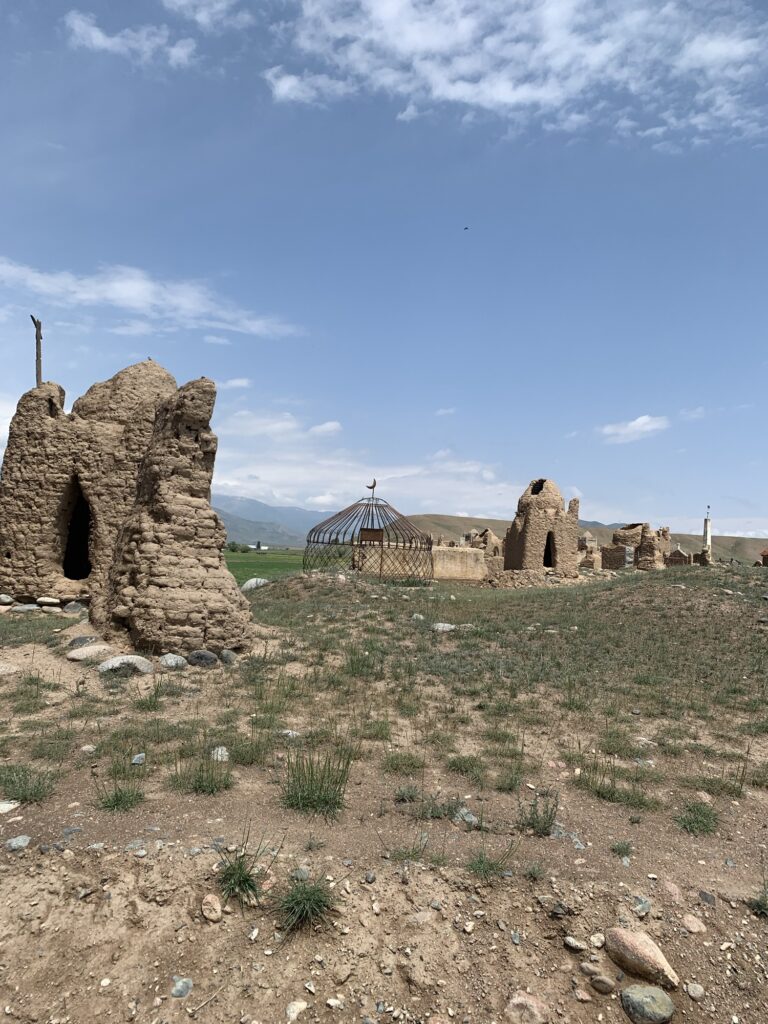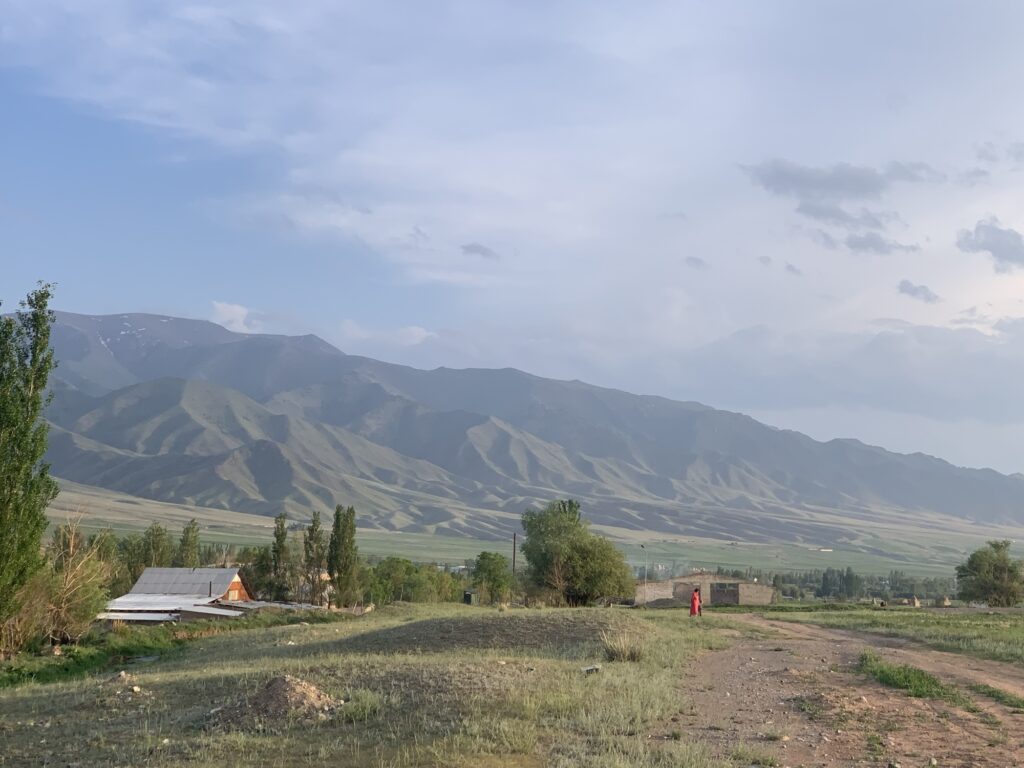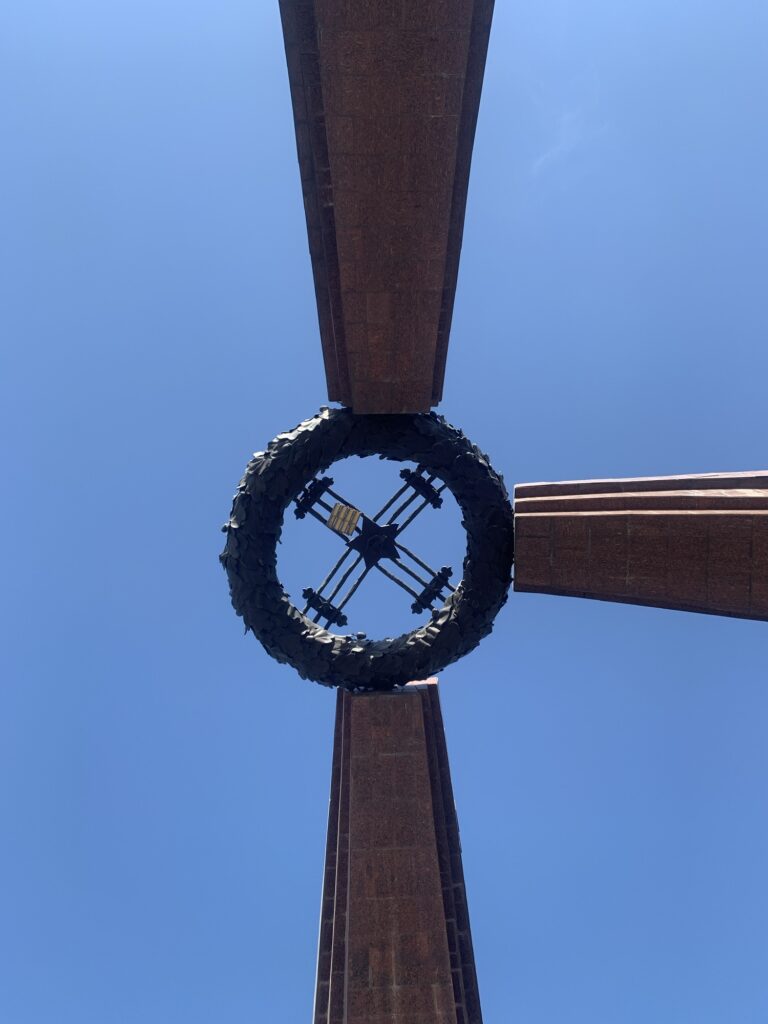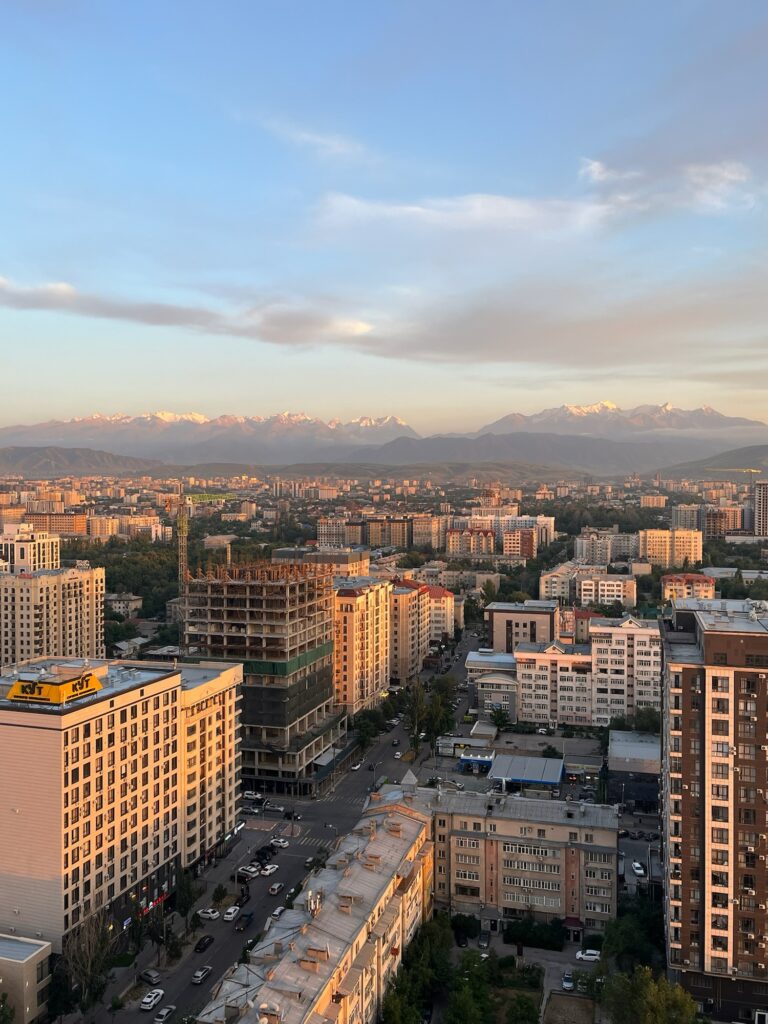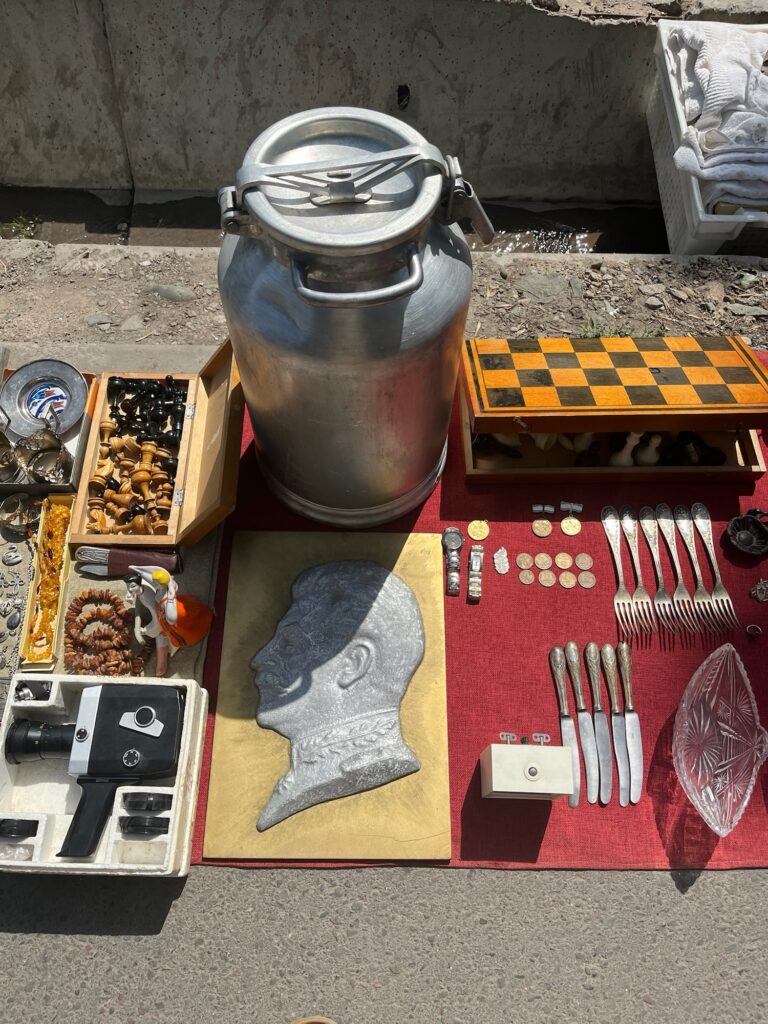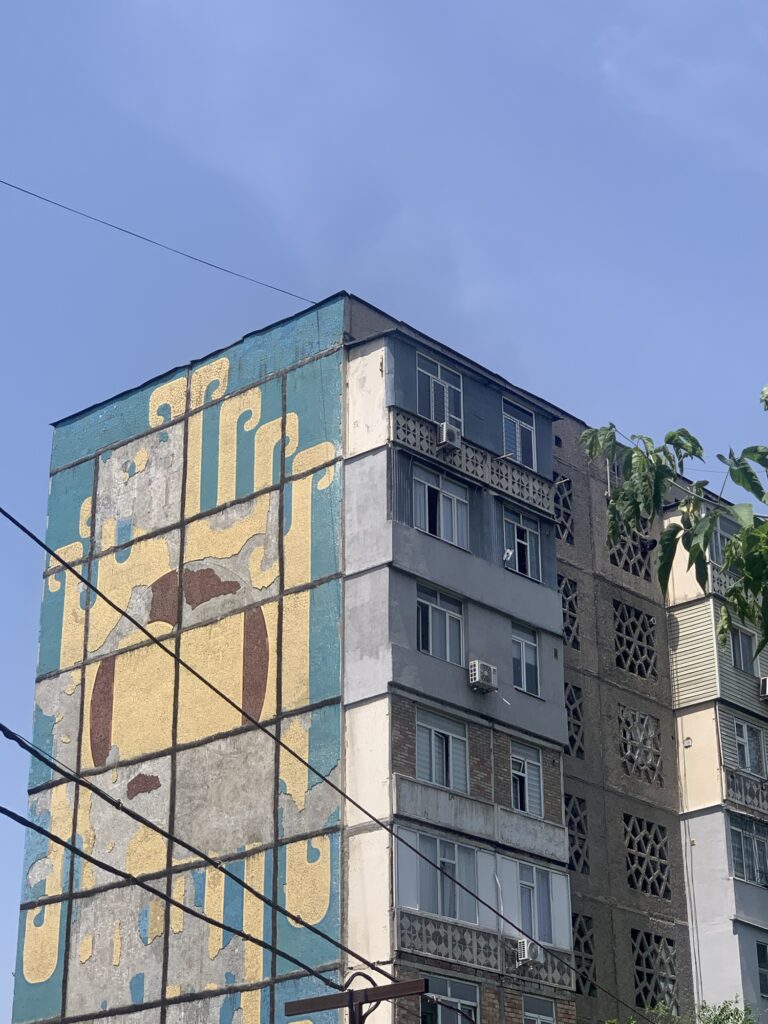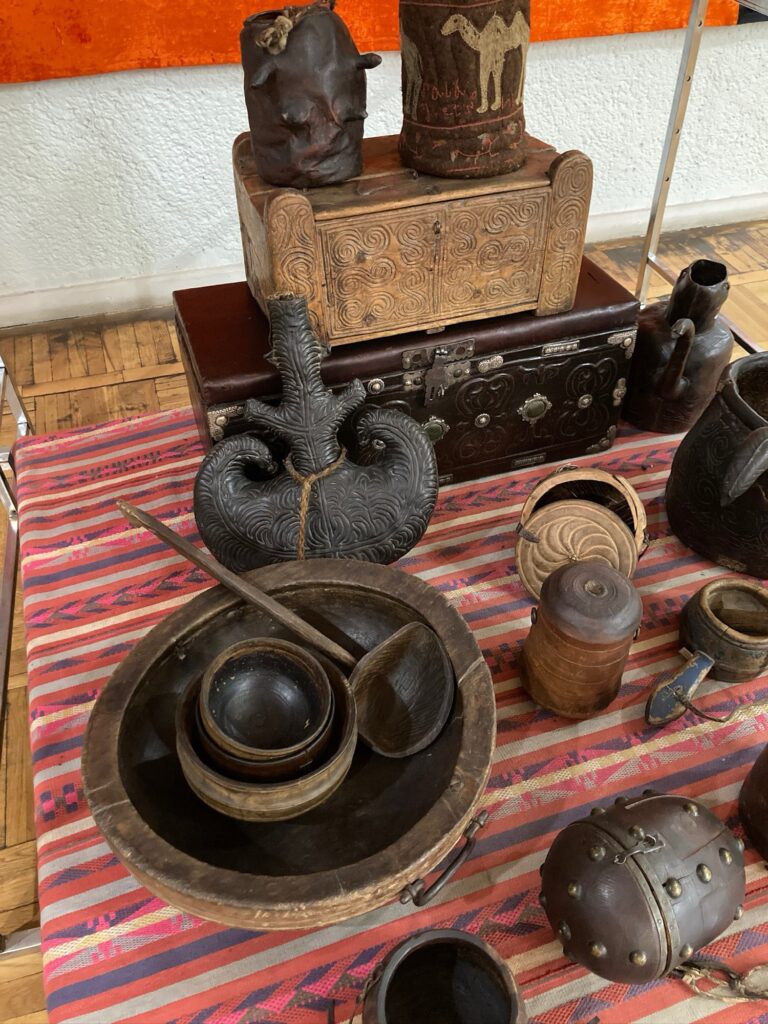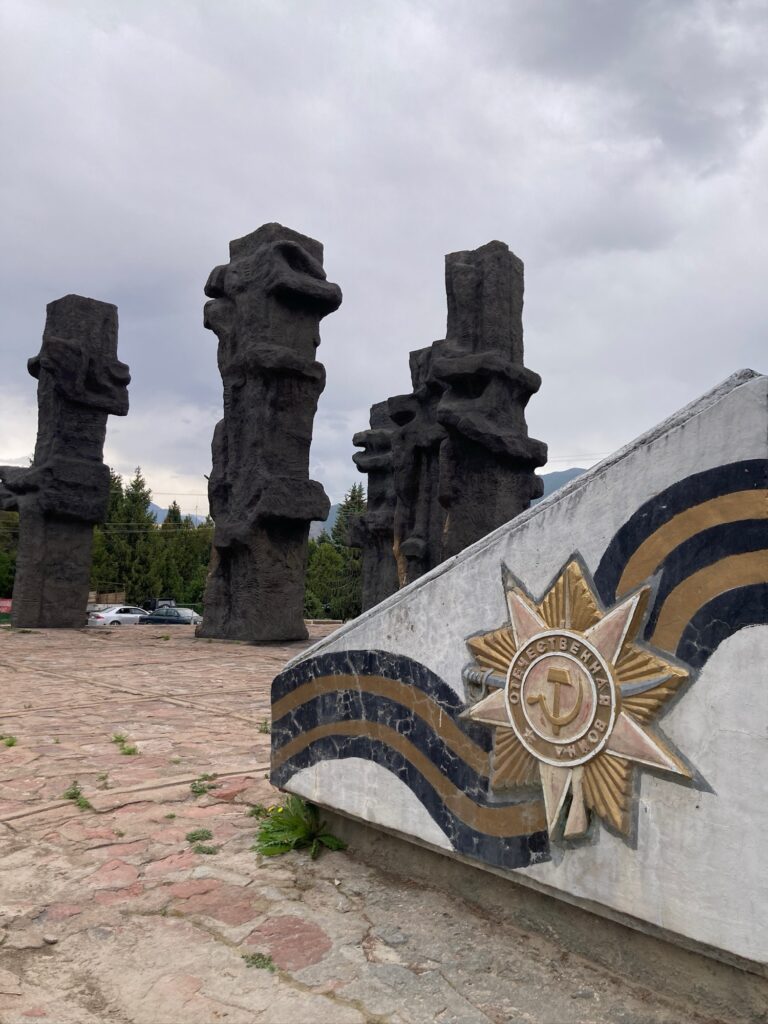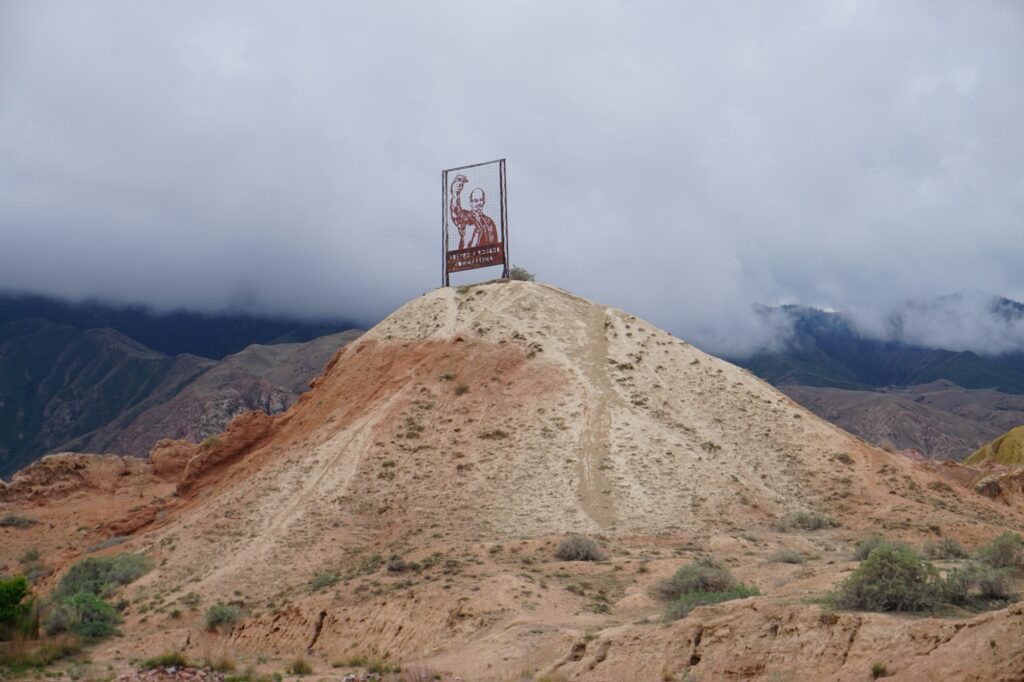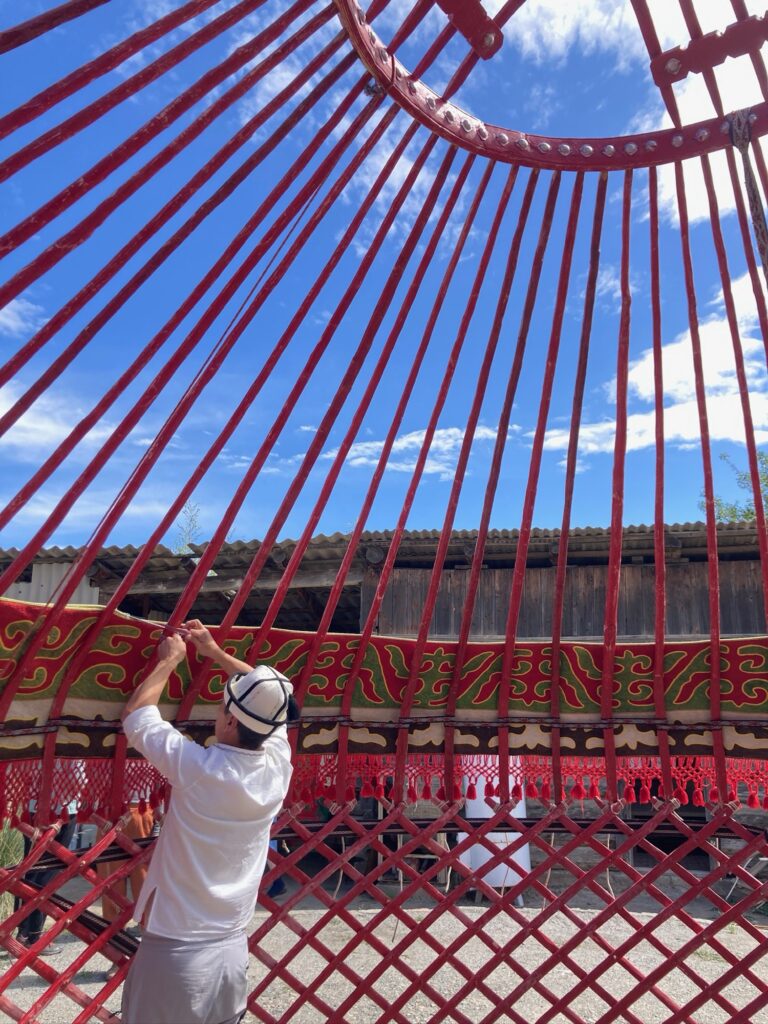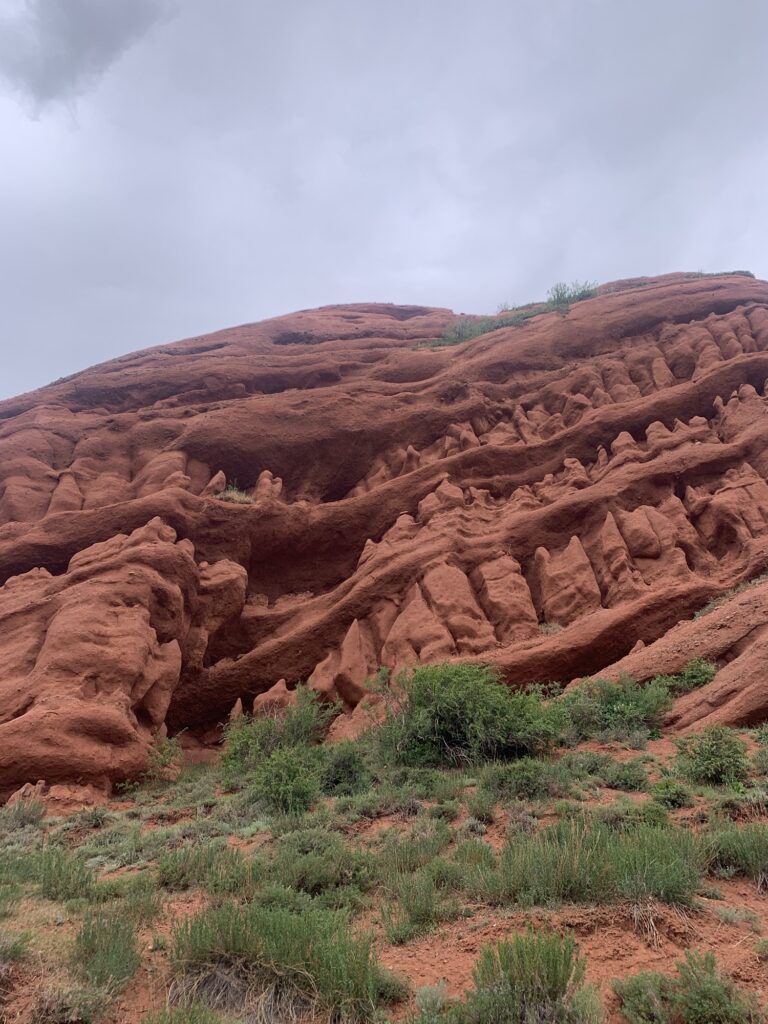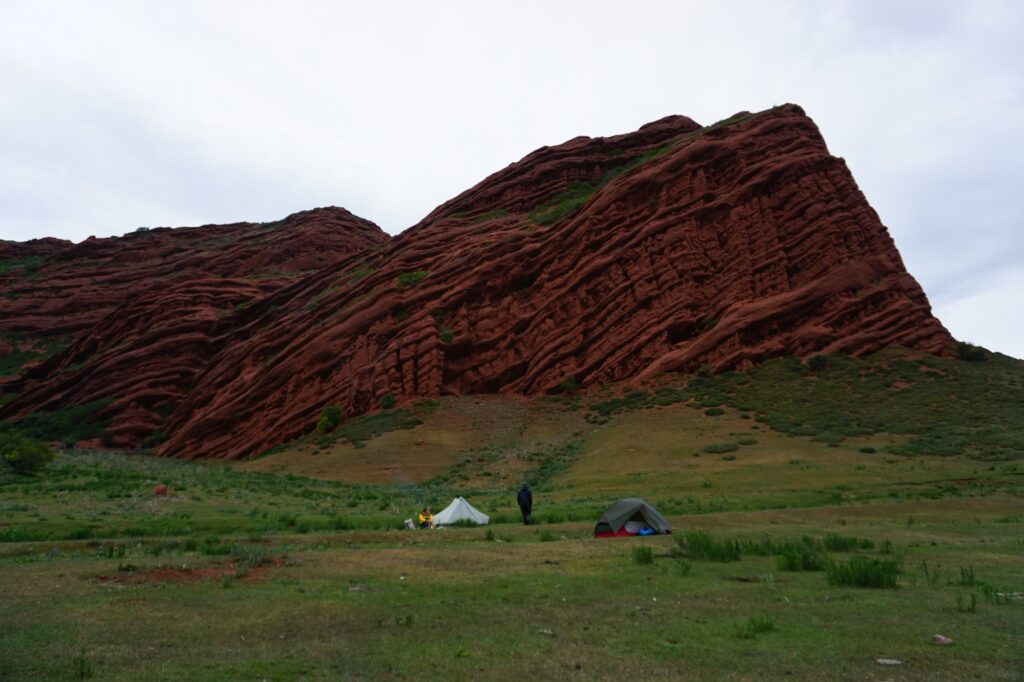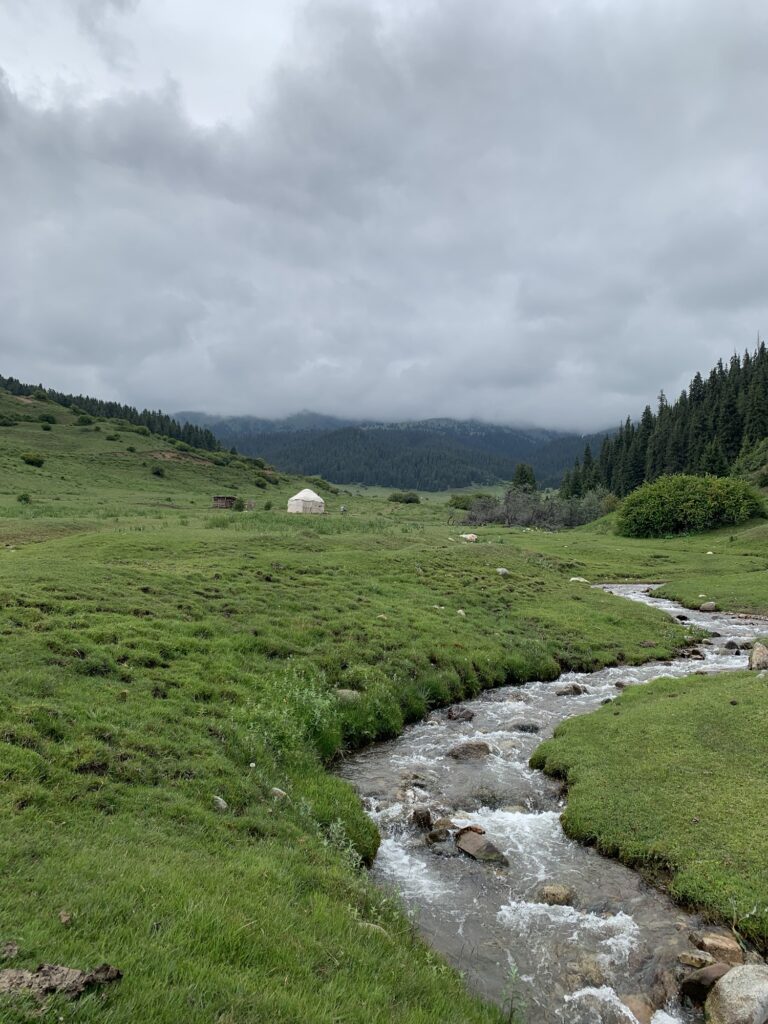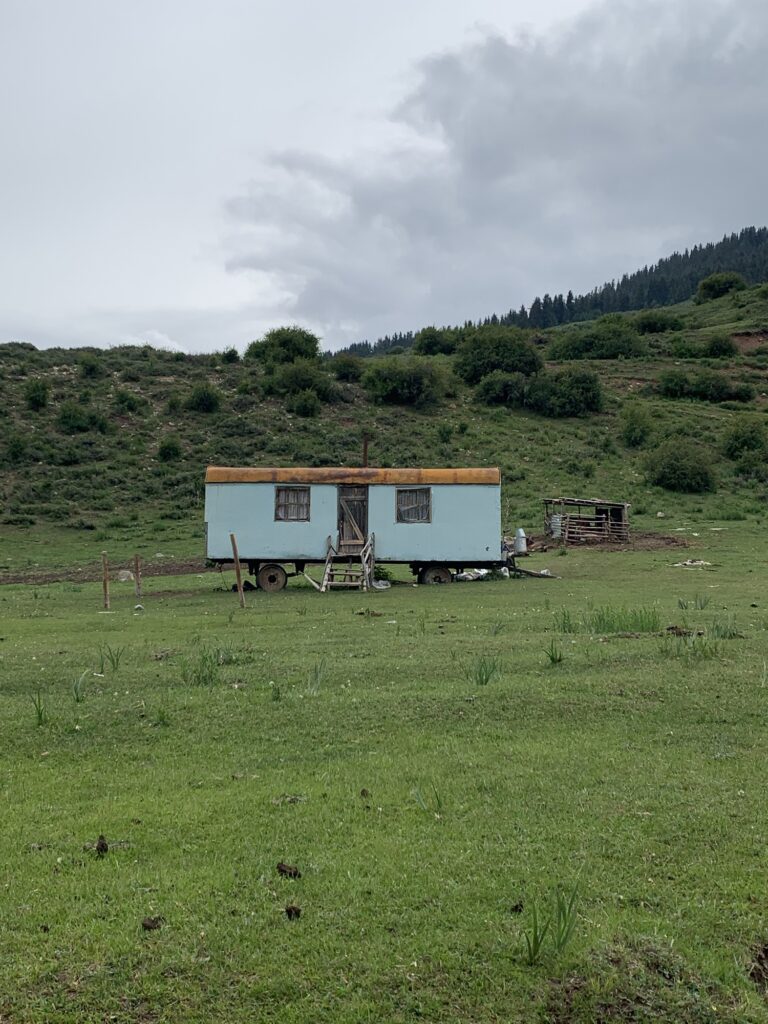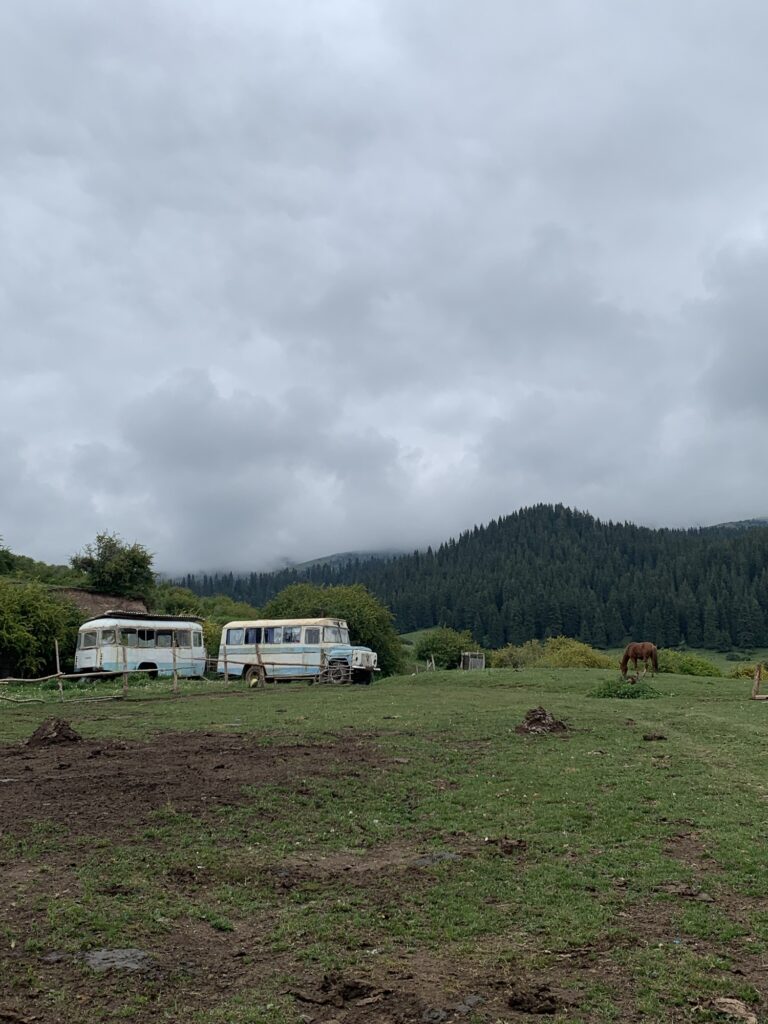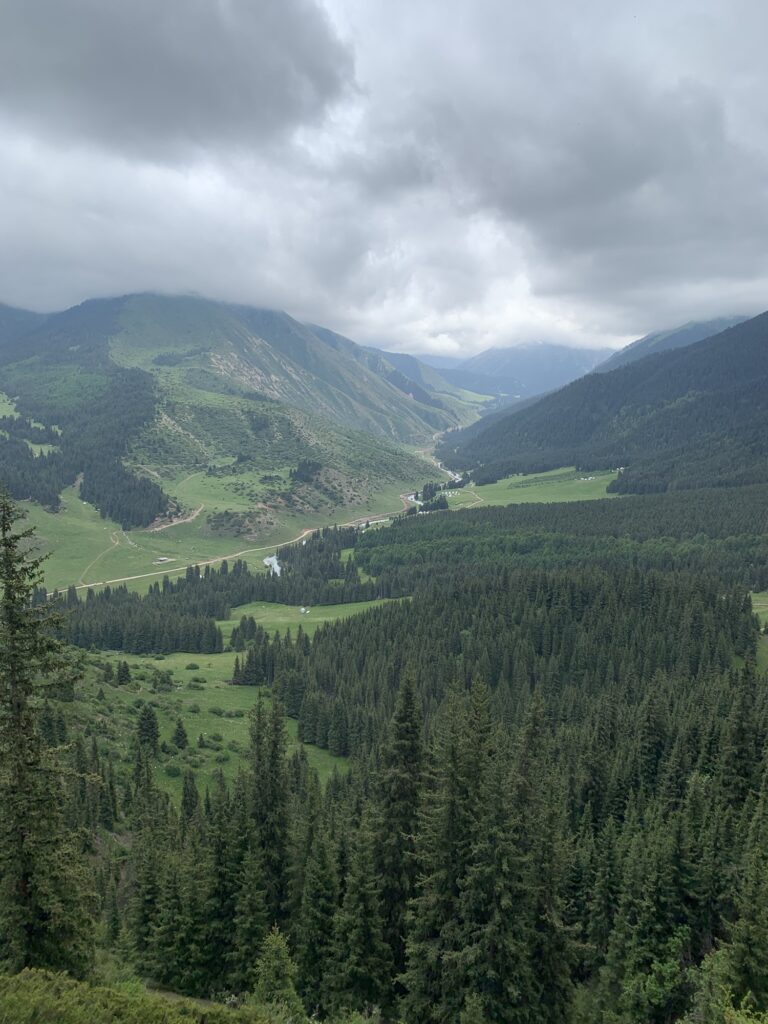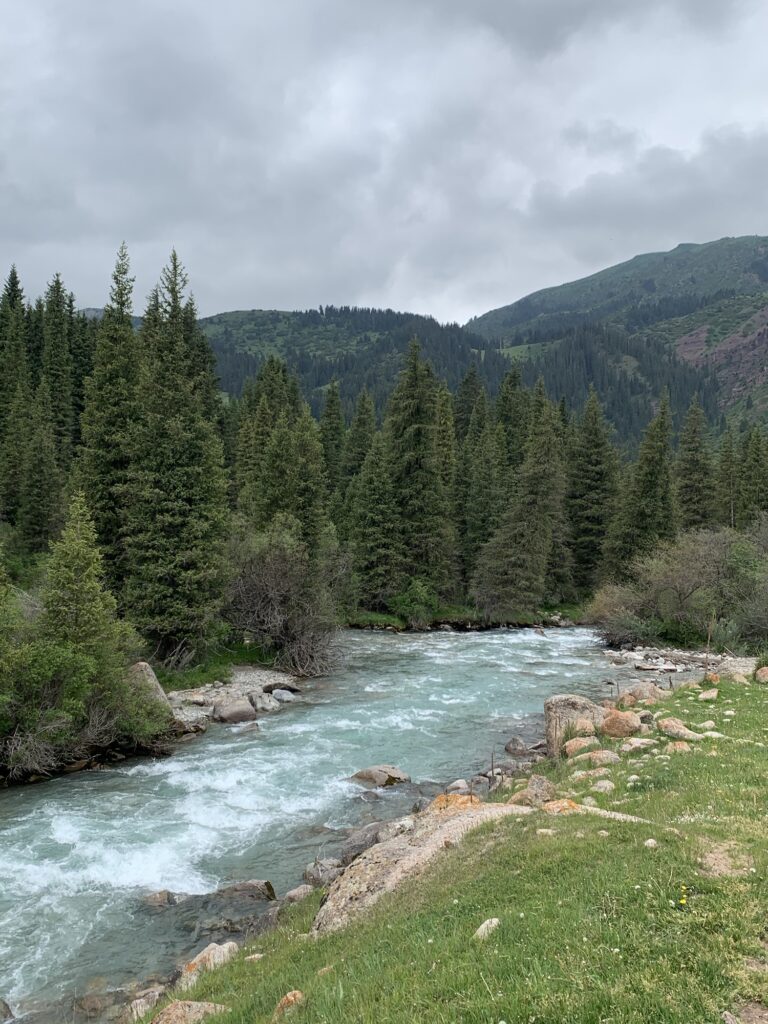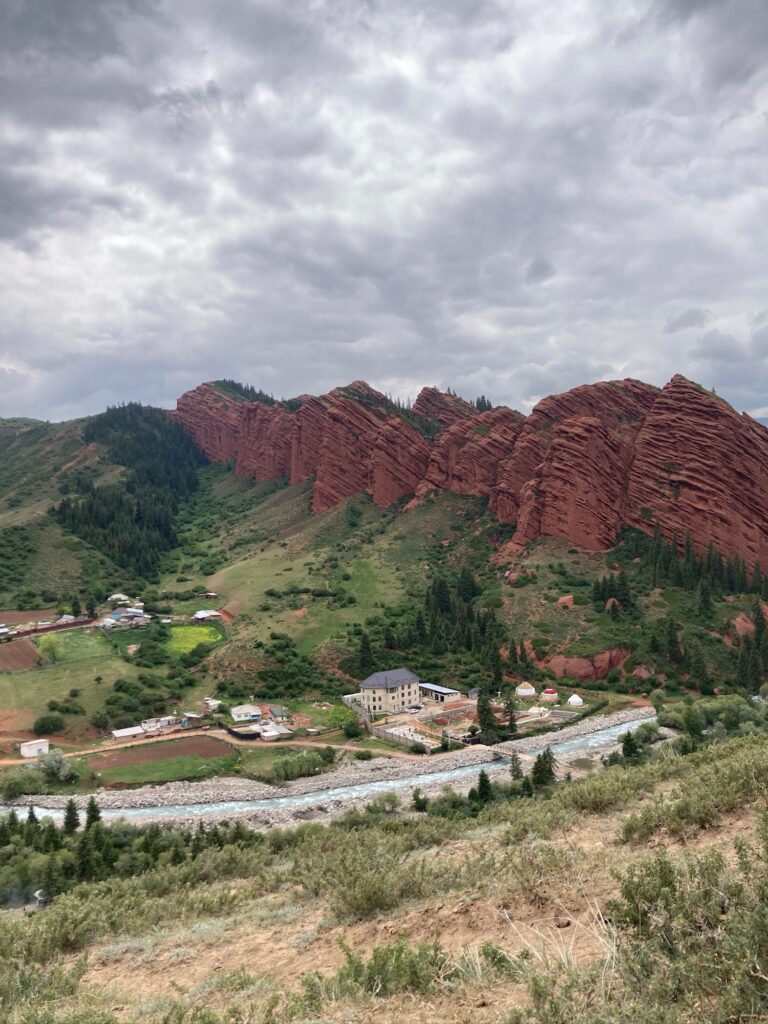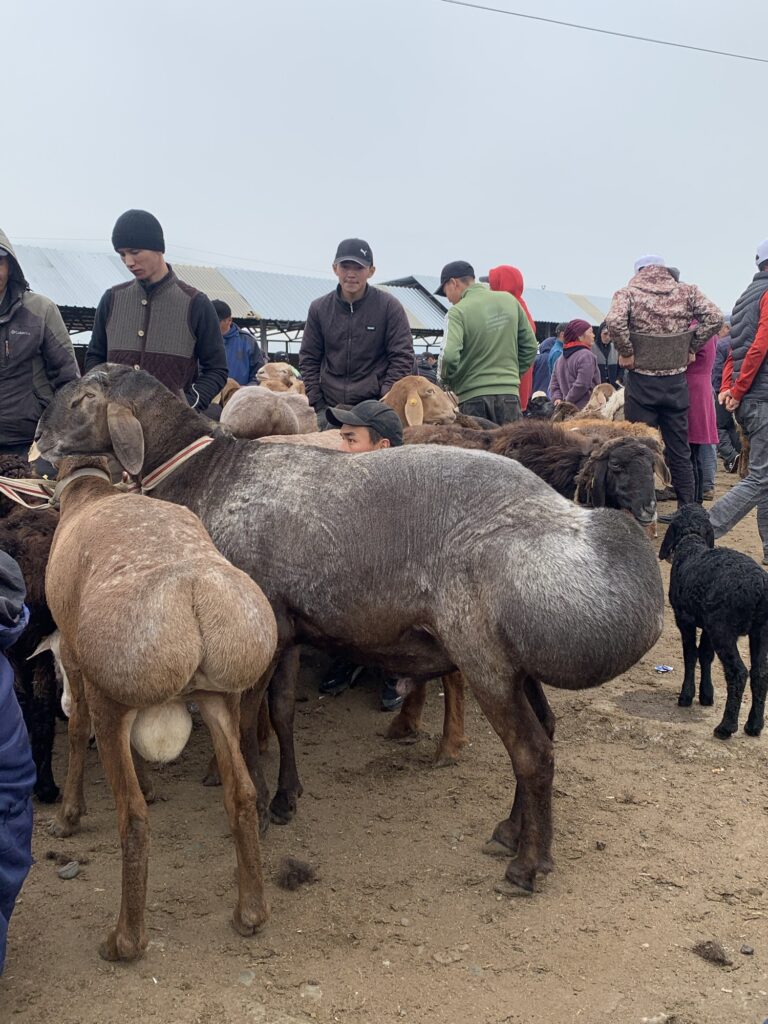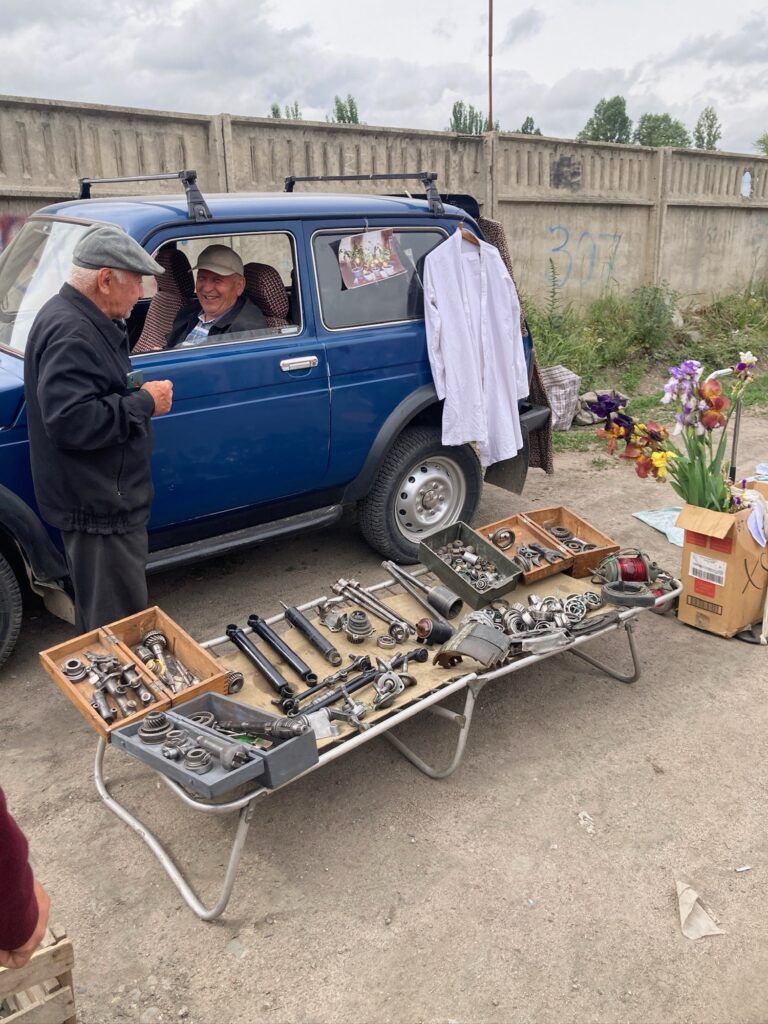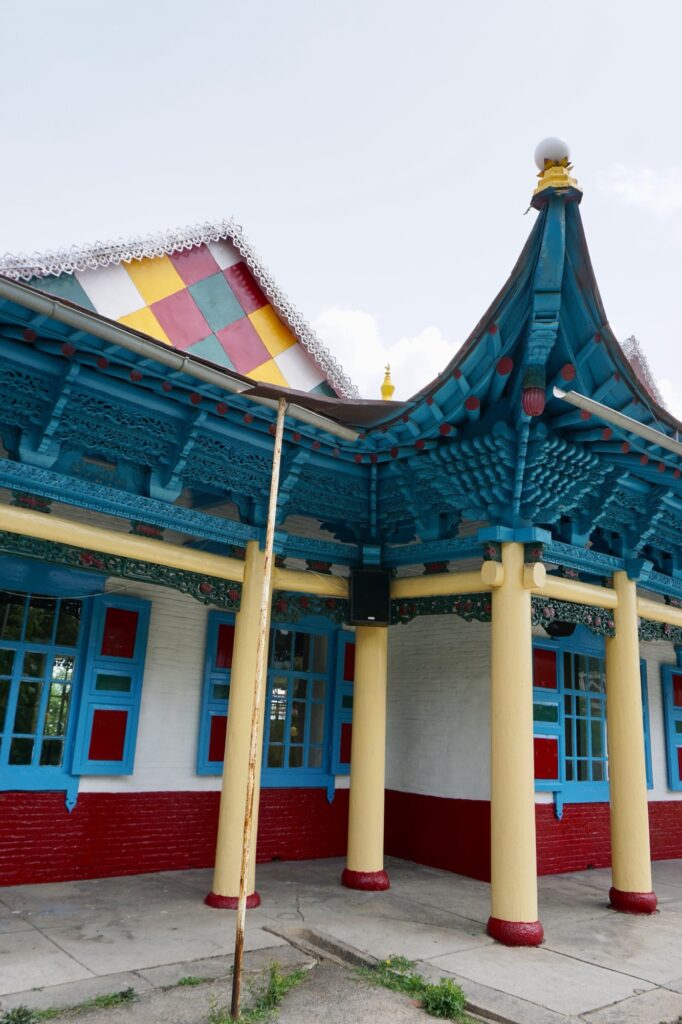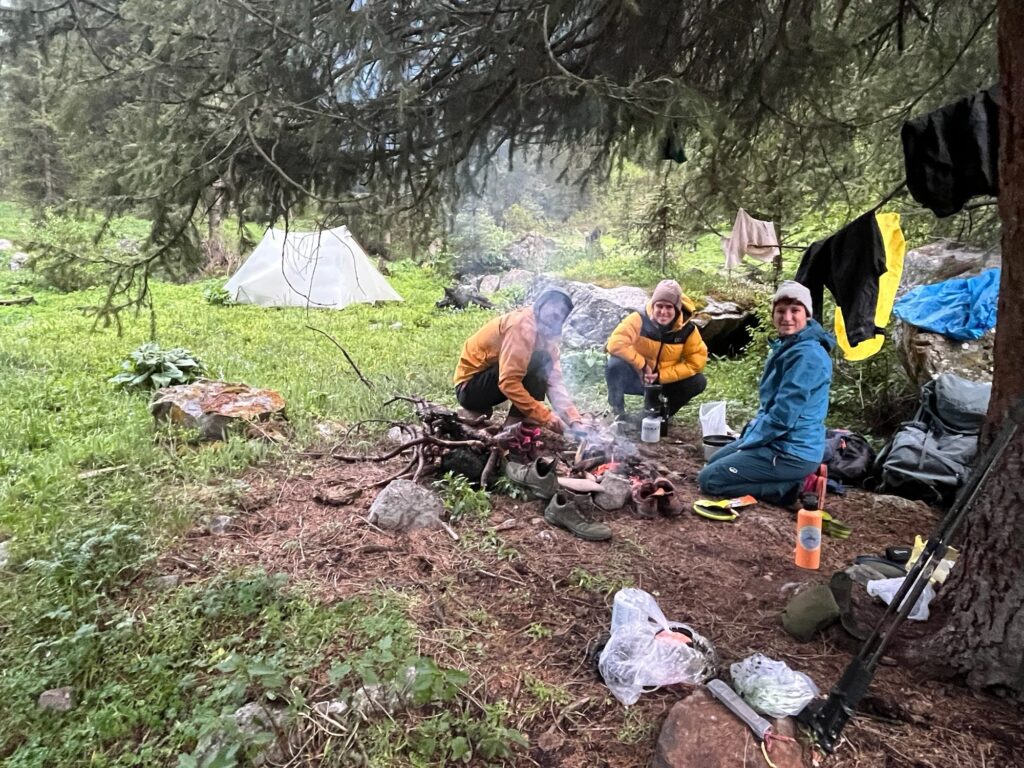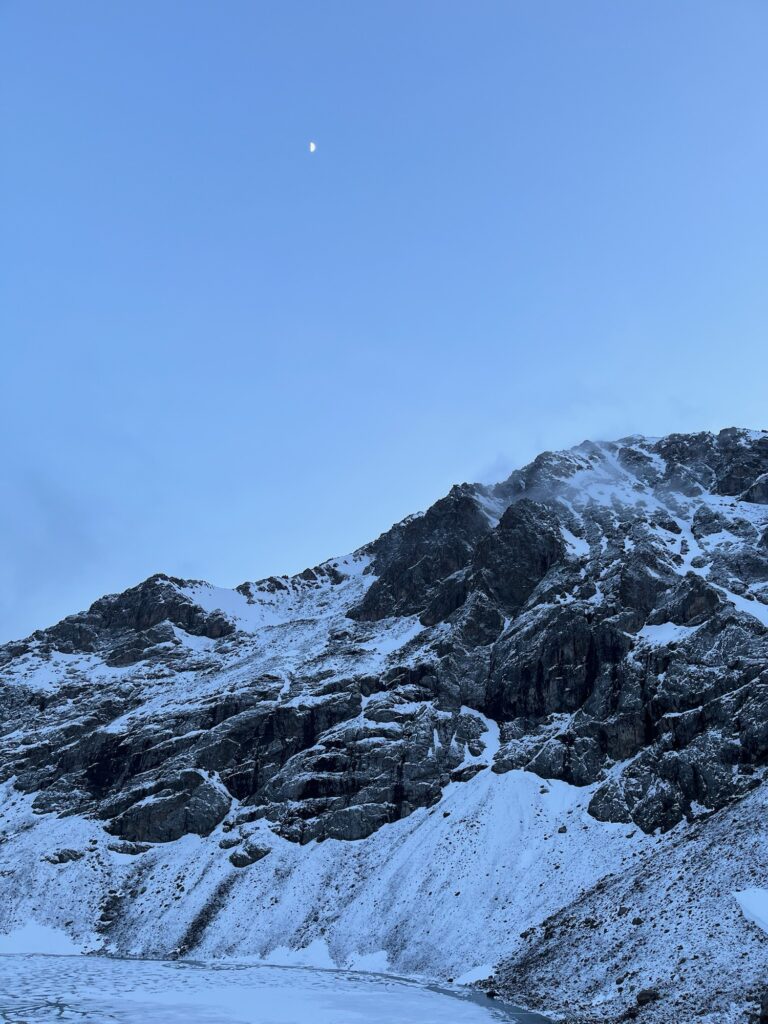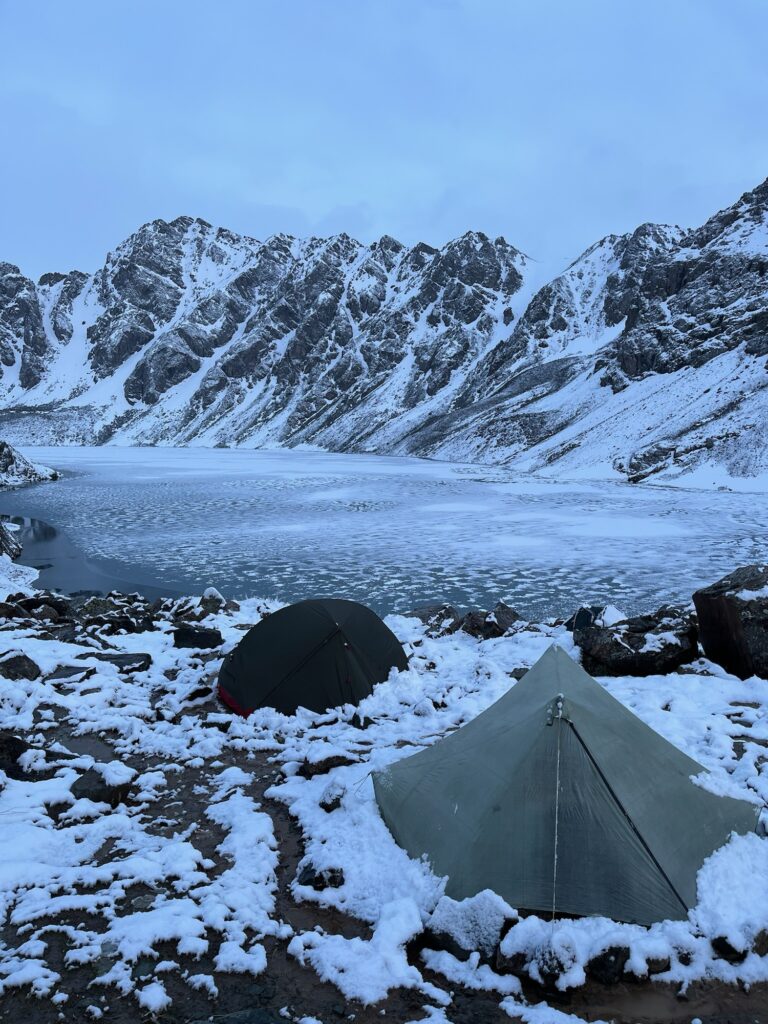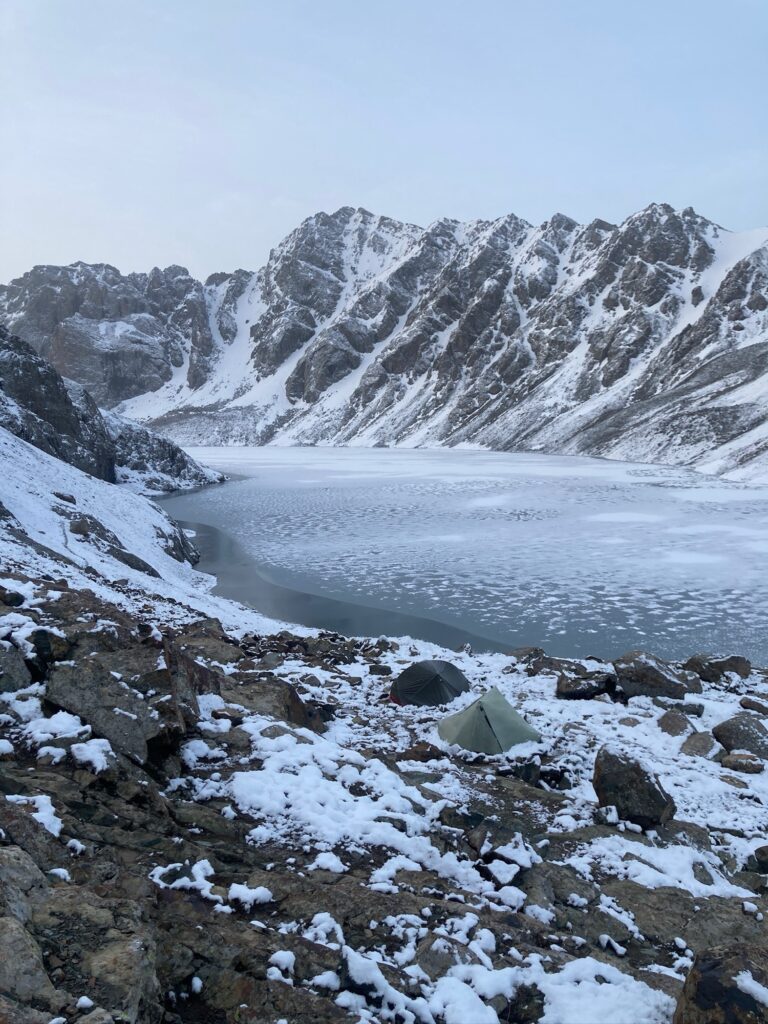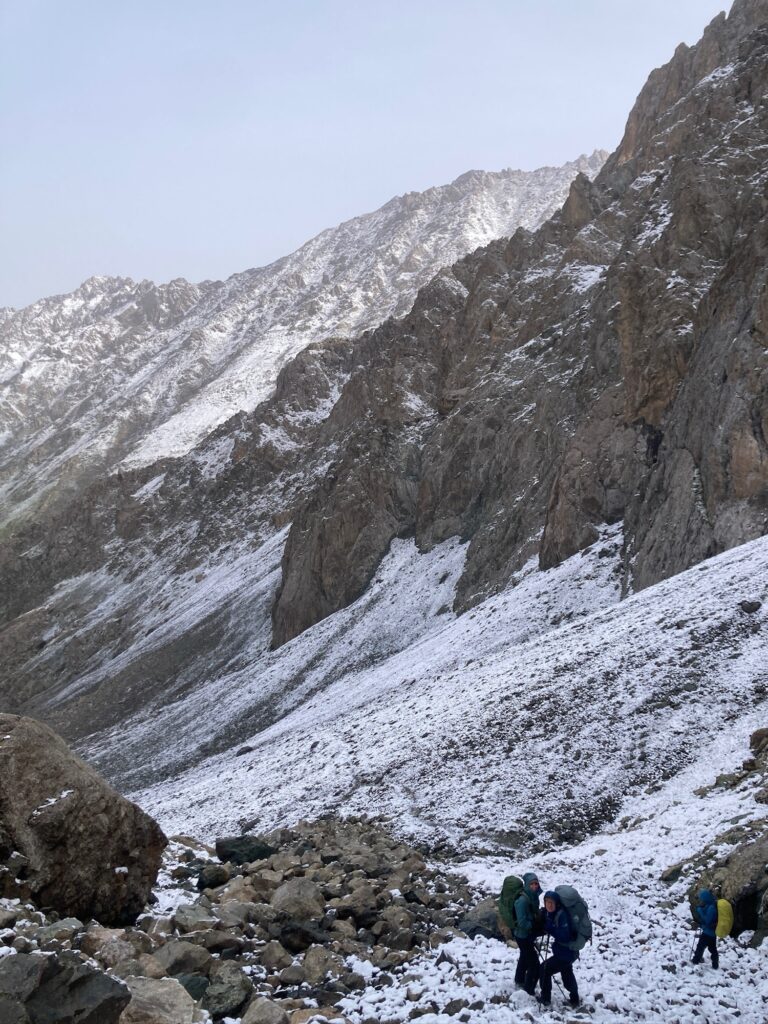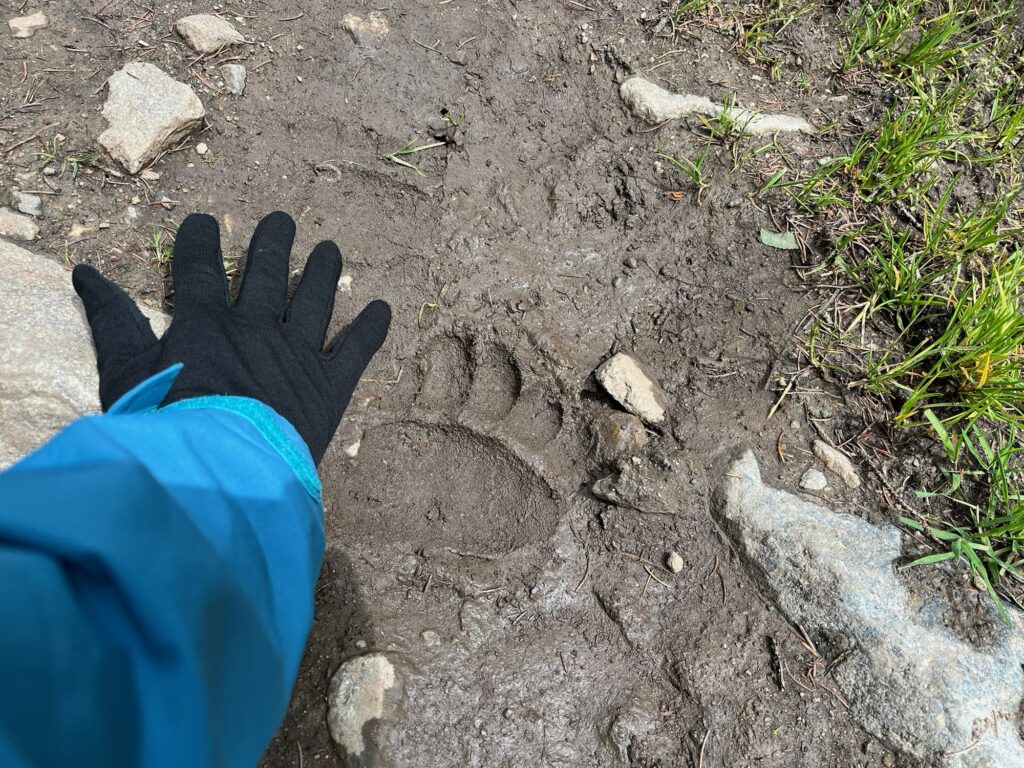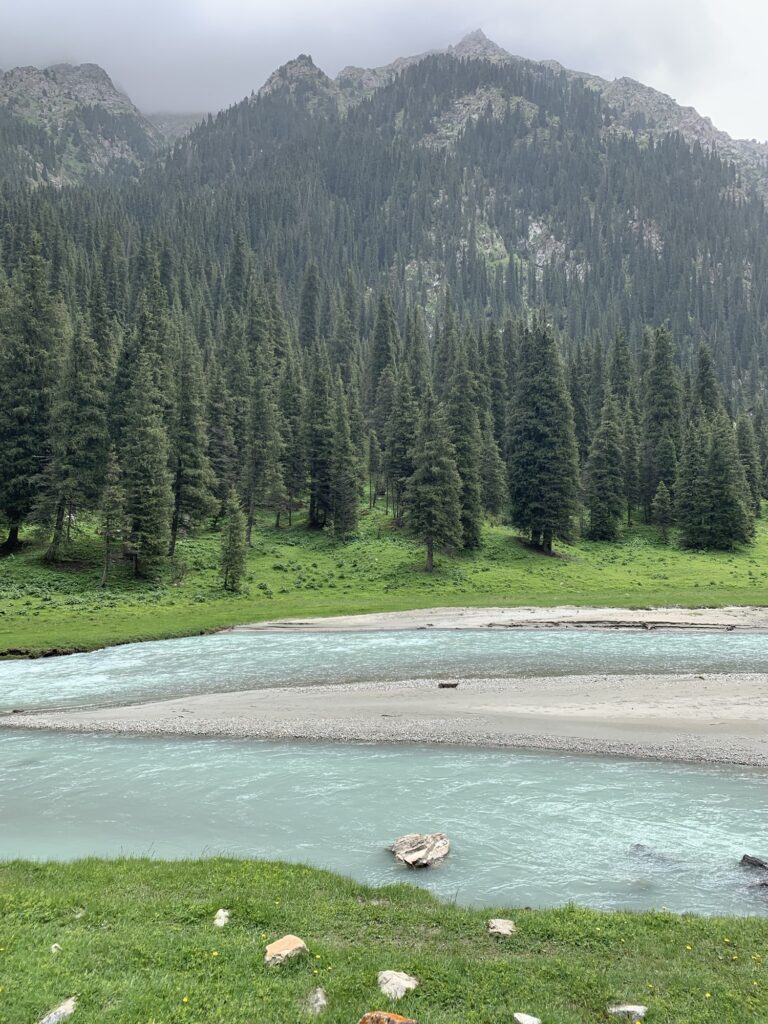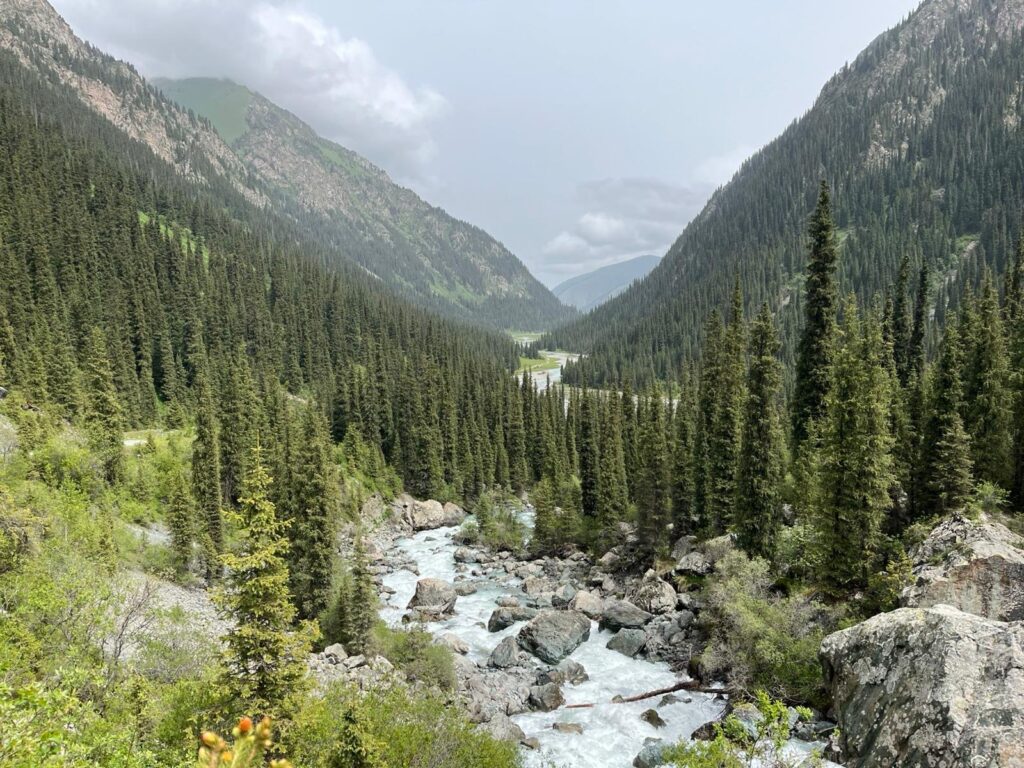As we travelled through Kyrgyzstan with Amélie and Constance, I often found myself short of words to describe the great diversity of mountain landscapes that unfolded in front of our eyes, but I will try my best to convey the images and emotions we experienced in the past month. Kyrgyzstan is one of the most mountainous countries in the world, with the Pamir-Alay to the South (the « Roof of the world » ranging across Tajikistan, Afghanistan, Kyrgyzstan and Western China) and the Tian Shan (the « Celestial mountains » stretching across Kazakhstan, Uzbekistan, Kyrgyzstan and China) which alone cover over 80% of the country. We were excited to explore this little ex-Soviet republic of Central Asia with our marmot loving and fellow adventure seeking friends. In total, 94% of the country is above 1000m of elevation and 30% above 3000m, with many peaks above 6000m, it promised to be a happy place for us.
Some parts of the Tian Shan mountain range felt slightly familiar, with dramatic rocky ridgelines towering above forested glacier-carved valleys reminding us of the French Alps. In Arslanbob, the 3800m high Friendship pass, ominous over vertical rock cliffs, scree slides and snow patches, was too intimidating for our liking and we decided to backtrack. Wandering through green pastures populated with cows, horses, sheep and goats, we instead made our way to the biggest walnut forest in the world, spreading atop a karstic plateau. This was a truly enchanting landscape, the ground matted with high green grass and walnut leaves and dotted with wildflowers, ancient walnut trees standing over us like an army of wise beings, their dense canopy a wonderful ceiling to shade and cool us from the heat. It was incredibly peaceful, and our camp was only disturbed by very curious cows and calves intrigued by our tents and campfire.
From the turquoise waters of a huge water reservoir surrounded by ocre rocky hills, to bright green high plateaux surrounded by rounded mountains and rolling hills, and through canyons of red rock, we couldn’t stop marvelling at the views outside the windows of the marshrutkas (local minibus), cars and trucks that took us towards lake Son Kul. In every valley, melting snow water was rushing down streams and rivers, their swollen tumult a beautiful flow of glacial turquoise.
Riding sturdy kyrgyz horses towards lake Son Kul, we discovered or rediscovered the joys (and pains) of exploring expansive landscapes on horseback. We rode through pastoral valleys and gently rolling mountains fully traced with cattle tracks and slept in beautifully decorated felt yurts, gorging on delicious home made jams in the morning. Riding over a 3300m pass, we descended towards Son Kul, Kyrgyzstan’s largest fresh water resource. The view was so untouched and expansive, with the lake (half the size of Lake Leman) surrounded by mountain ranges. Geologically, these mountains are worn and they feel different to the ones we are most familiar with in Europe, and more akin to the Australian Alps: smooth curves rather than sharp lines and pointy edges dominate the landscape. Yet, because they sit on a high plateau, they are much higher than a lot of the French Alps and many are twice as high as the highest mountains in Australia!
We admired every fold, knoll, wrinkle and ondulation of the naked hills; the play of morning and evening light creating shadows and building form. In the deepest gullies snow still lies, feeding the mountain streams. Low annual rainfall means streams at higher altitudes meander across the pastures, and willows are at home in their bends. Yurts smoke as morning and evening meals are prepared. Flocks of sheep, 200-500 strong, flow across the hills followed by shepherds mounted on horses and their dog, often just black dots in the expanse of endless green ridges. As I looked over this painting-like view, I felt a sense of awe for a landscape I’d so many times imagined and that was finally unfolding in front of me, a perfect romantic picture of nomadic pastoral life.
On the Southern shore or lake Issyk Kul, the slightly salty, largest lake in Kyrgyzstan, colourful rockey canyons and green fields alternated on the flatland bordering the water. Quickly flat turns into rolling hills and high sharp mountains with snow capped peaks. Dodging capricious weather, we hiked up a pastoral valley and were surprised to discover burgundy rocky ridges carved by the elements, which very much reminded us of Uluru and the Kata Jutas – except these were surrounded by green meadows rather than desert! The atmosphere, helped by the low skies, felt intimate and we loved walking through pine forests and carpets of spring yellow, pink, blue and purple spring flowers. In this valley, shepherds lived in converted old soviet trucks or buses, and on the other side of the pass we stumbled onto a large village of yurts alive with groups of young local weekenders.
We’d kept another high altitude pass and the Ala Kul glacial lake for last, hoping the snow would have melted by early June. We braved the rain, tackled the brutal 1100m ascent (in only 6km!) to Ala Kul lake, and were rewarded with beautiful views over the lake which, though still partly frozen showed no sign of recent snow – promising for the pass the next day! But once we’d snuggled under the tents for a restful afternoon, snow started to fall heavily. At some point we thought it’d stopped because of the silence, only to realise it was because it covered the tents so much that it insulated us from the sound outside! When we emerged out of the tents to a clear sky with a crescent moon, it was another awe-inspiring view, with the lake covered in snow, the surrounding rocky ridges coated with icing sugar and the deep post-snowfall silence enveloping us. The decision was made to backtrack instead of attempting the pass which was another 400m higher and we were delighted to walk back through the same valley with clearer skies, admiring the elegant pines, the sharp green of the grass contrasting with the bright turquoise of the river. We even found many bear footprints… exciting (or frightening?)!
Though very diverse, these mountain landscapes had two major points in common. Everywhere there was an absolute profusion of marmots – be it the big fluffy format or the small local version (suslik). To our greatest pleasure, all our hikes were rewarded with sightings of our favourite rodent, and we even witnessed a marmot fight! As often goes in marmot populated areas, eagles, griffins and vultures were also plentiful and we admired their elegant flights. Secondly, we found scenes of nomadic pastoral life everwhere, with flocks of horses, cows, sheep and some goats roaming the pastures seemingly free. Though modern amenities are making their way up the valleys with yurt camps (jailoos) often accessible by car, the simplicity and rusticity of nomadic pastoral life still seems to resist the assaults of « progress ».
Pastoral nomadism is still a central part of kyrgyz identity and culture. Kyrgyz crafts are rooted in nomadic life, and kyrgyz fine arts are essentially a profoundly aesthetic and decorative approach to making the transportable items needed for everyday day life. Yurts are builts and filled with pieces that are each a masterpiece of craftsmanship: colourful shyrdak (cut and sewn felt) and ala kiyiz (felted wool) carpets, intricately woven woolen ormoks (straps that hold the yurt together), decorated chi (reed mats that make up the walls), carved wooden chests and doors… suffice to say our love of beautifully made useful things was well nourished here! We even tried our hand at making Ala Kiyiz and loved learning everything about the process as well as how to build a yurt and many more things at a local workshop.
Beyond nomadic life, Kyrgyzstan is an interesting cultural mix. From nomadic jailoos to medium sized towns, mountain villages and all the way to the modern capital Bishkek, we observed many facets of kyrgyz society. Kyrgyzstan is a predominantly muslim country, and this was obvious in some small villages where most women wore the hijab or even burkas. Mosques were ubiquitous with their golden or chequered domes, and we heard the call to prayer often. Signs of the soviet past are numerous: every town has its statue of Lenin, who is celebrated while Stalin is cancelled (fair enough!), flea market stalls are lined with hammer and sickle or red star badges, and the architecture of government buildings and museums in Bishkek is decidedly of the soviet brutalism kind. Though it has experienced its share of political turmoil, Kyrgyzstan is a democracy – unlike Uzbekistan and Tajikistan which are heavily single handedly governed by autocratic leaders. We could really feel this greater sense of freedom (and sometimes disorganisation), especially in the lovely streets of mountain surrounded Bishkek, which feels more socially free and much less policed than Tashkent. In the capital, traditional Kyrgyzstan mingles with a modern and liberated youth, and a mainly russian speaking population.
While we make our way towards Tajikistan through the mountains, I feel deeply grateful to have had this time with our dear friends, and think to myself that we will be back, for more awe-filled mountain exploration, be it on foot, on horseback, or on skis!
